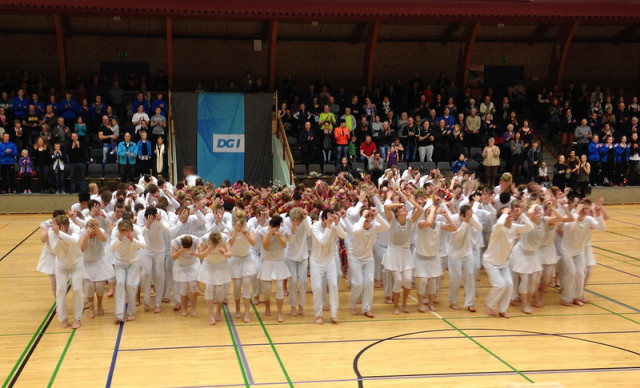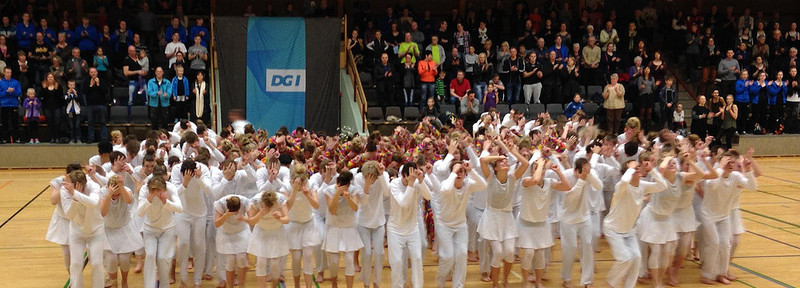Gymnastics is a big deal in Denmark. Talk to any Danish person (regardless of age) and the probability that they were part of a gymnastics group at some point in their life is very high. Gymnastics is seen as a sort of collective activity here. The Danish Gymnastics Association, DGI, has more than 300,000 members at this time.
As the Danish wikipedia page says, there are two kinds of gymnastics in Denmark: popular gymnastics, and competitive gymnastics. When a non-Dane thinks of gymnastics, they probably think of the competitive form. However, when Danes think of gymnastics, they think of the first kind.
So what is the difference?
First of all, gymnastics here is not competitive. The output of the groups is, instead, shown at exhibition events at various places around Denmark. During the past weekend, there was such an exhibition weekend at Humlehøj-hallen in Sønderborg. Having heard a lot about it but never experience it, we decided to check it out.
What did we find?
Well, first of all, there were groups of various ages participating, from very young kids who cannot really follow a routine, to an ‘experienced lady team’, with an average age of 74. And, of course, everything in between, though not people between 30 and 60, it seems. These people are, probably, ferrying their kids to gymnastics groups instead and no time for their own participation.
Another thing that struck me is what the routines really showed. Now, as a non-Danes, I typically think of the Olympics when I think of gymnastics. However, that is not the case here. Instead, there seems to be 2 types of routines: that which I would call tumbling, and that which I would call dancing.
The tumbling routines mostly consist of the whole group of kids, typically 10+ kids, doing the same tumble one after each other. The dancing consists of, hmm, a group dance routine. Most routines are an either/or between the two, so the dancing is not done to link the more technically challenging tumbling parts, as is the case with rhythmic gymnastics in the Olypmics. Instead, if the two are interlinked, you might have a flip-flop between the two, so say, a few minutes is done as a dancing routine and the next few minutes as a tumbling routine. The only routine that could be considered somewhat of an exception to this during the event we saw was the Vesterlund efterskole group, where, possibly as they were around 180 participants, there was more scope for amalgamating the two it seemed.

It was an eye-opening experience to look into this really traditional part of Danish culture that is still going strong. In a way I am glad I didn’t grow up here, as I am sure I would have been absolutely rubbish at it (with even less motivation to do it). However, if you have kids it seems that doing a parent and child class is the thing to do. In that case, I think, I will have to leave it up to Michael to introduce any kids we might have to the delights of gymnastics.


